Hotel California began to play as the bus laboured through the oxygen depleted atmosphere nearing the gravel pull-off towards the infamous Death Road, also known as North Yungas Road, where I would soon begin a bicycle ride that had a few brave souls around me trembling in their seats and some stoked for an adrenaline-filled day of adventure.
The lyrics, “On a dark desert highway,” cascaded out of the speakers. It was dark out when I woke up this morning, but it certainly wasn’t anymore. This wasn’t an arid desert climate either, but the high sub-alpine tundra of the Bolivian Andes at a dizzying altitude of 4700 meters, or 15,420 feet, above sea level.
The lyrics continued, “…cool wind in my hair,” Yes, that would soon be true. The numbing wind would be whipping through my hair a few seconds after I would roll my bicycle’s cold, rubber tires onto the paved highway that snakes along the mountain contours towards the starting point of what has been christened, The World’s Most Dangerous Road.
Cycling Death Road was my impending feat, one that I placed on my bucket list as soon as I made the decision to travel to this country.
The words, “The warm smell of colitas rising up through the air,” permeated the space around me and a thought lingered for a second. Yeah, maybe a little of that would be helpful for some here. It might calm the nerves. However, what was even more common than marijuana in this part of the world was cocaine. Actually, we would descend into one of two regions in Bolivia which combined are permitted to grow up to a limit of 49,000 acres of coca leaves.
Coca leaves are primarily grown for religious or medicinal purposes. I’ve witnessed them being used in special ceremonies to Pachamama, the Incan earth mother. Coca leaves can also be either chewed or brewed into a tea to relieve problems such as altitude sickness. I have even seen people stick the leaves directly to their face, possibly to relieve some kind of skin condition. A big problem, though, is that a large percent of the crop goes missing each year due to illegal drug trafficking.
The bus stopped and I gathered what I needed from my pack. The thought crossed my mind that I may never see this pack again. It could end up at the bottom of a 600 meter abyss if the gods are angry today or if the driver of this bus is as unlucky as this guy. The pack would stay on the bus, which would trail behind the group of us, as we took on this very notorious road known for the astounding number of lives it has claimed in the past.
Hopefully none of us would have to worry about fatal accidents on this day. After all we did make a toast to Pachamama with some very potent alcohol before rolling down the curvy highway in single file.
The bottle made it’s rounds and came to me. Although this would be highly frowned upon in Canada, swigging the stuff before the ride is a traditional ritual to ward off anything that could possibly go wrong.
First, I sprinkled some of the alcohol on the ground to keep Pachamama happy. The Incas believe she lays under the mountains in the shape of a dragon and according to them she is responsible for the lands including any kind of earth-related natural disasters like earthquakes and landslides. We didn’t need any of that today!
Then I sprinkled a little onto my front tire to ensure the bike stayed upright on the road and in sound working order. The great thing about this company, Gravity Assisted Mountain Biking, is that the bikes they use are replaced every two years. The company is very picky about keeping their bikes in optimal working order which is a huge reason why I chose to go with them. They use only the best quality bikes such as Kona.
Lastly, I took a small swig to wake me up. Ugh. It was strong!
We were ready. In single file, approximately one bus length apart, we breezed down the highway careful to stay near the white line. There have been car/bike accidents on this highway, which doubles as a Bolivian speed-way. Drivers cut corners and if you’re in the way, well, guaranteed the outcome won’t be good.
We stopped at a highway pull-off. Kieren joked with us and asked, “Does anyone have any drugs on them right now? If so, you may want to throw them over the edge of the cliff here…or hand them over to me.” Everyone laughed and although it was a joke, there was some seriousness to his warning. Kieren pointed down the hill at a group of buildings on the highway. It was a drug control check point. Maybe someone was in possession of drugs and if they were they best deal with it now. Kieren also mentioned that the check point is ineffective to ward off any drug traffickers. Apparently the drug control officers don’t typically check tour groups of cyclists. Furthermore, they all go home to bed at midnight not to return until 5:00 a.m. the next morning.
We made it through the check point without any hassle and arrived at the beginning of the road that has become the end for so many. Death Road snaked high along the steep mountain slope following the length of the gaping Yungas Valley until it curved out of sight. There was no turning back now. My choices were to ride the bike or hop on the bus and hand my fate over to the bus driver. To be honest, I would rather be the one in control.
Back in 1930, Death Road was carved into the steep mountain slope by the Paraguayan prisoners from the Chaco war. Yes, the Bolivians really believed that would be a good task to give to a bunch of disgruntled hostages. It’s very brave to trust they would do a good job of it, but then again I suppose I’m brave to consider cycling it.
Death Road used to be the only route that connected the small trading town of Coroico, in the jungle, to the major city of La Paz. Residents of the small community had no choice, but to reluctantly undertake this perilous road with its gauntlet of hazards, such as landslides, erosion, waterfalls, fog and high dust from large vehicles gnawing along the ground.
From the top, the road drops an altitude of 3600 meters, or 11,800 feet, within a distance of 64 kilometers. Combined with its narrow width, sharp hairpin bends, blind corners, lack of road barriers, sheer drops and natural hazards, Death Road has been responsible for an average of 26 vehicles plunging over the edge and 200 – 300 lives lost each year. The highest number of deaths tolled 320 in 1983 when a bus plummeted off a precipitous ledge into the abysmal gorge below sending 100 people to their deaths. How scary! Luckily a safer alternate route has now been constructed.
Much of the road is single-lane, the narrowest section being only 3.2 meters, or 10 feet wide. This is not wide enough for two vehicles to pass which forces one vehicle to either back up until passing is possible or accept the risk with a potentially fatal outcome.
Because of this dilemma, specific rules have been set to ensure a safer pass. The law states that the ascending driver always has the right-of-way since the descending driver has more control over their vehicle if backing up is necessary. It’s the descending driver’s responsibility to stop and navigate the pass.
Furthermore, the ascending vehicle must move over to the right, which forces the descending driver to move to the left along the outermost edge of the road. The reason for this is because the descending driver has a better view of their wheels to be able to navigate the cliff edge whereas the ascending driver would not.
To add a further challenge, sometimes visibility can be very poor with dust or fog and in the rainy season there can be landslides.
As I rode, I passed many crosses marking the deaths of drivers who had failed to navigate their way safely along this treacherous road.
Because the law states that descending traffic must stay to the left, the rule also applies to cyclists. I cringed at the thought of riding in the left lane along the edge of a road named death.
I kept thinking about what an ex-boyfriend told me as he was teaching me how to down-hill mountain bike. “Just look ahead where you want to ride,” he would insist and then he would tell me, “If you keep looking at the tree at the bottom of the hill that’s where you’re going to go.” His words echoed in my mind as I focused intently on the left wheel well ahead, however the expansive Yungas Valley and the eroding edge on my left kept beckoning me to look.
Another important reason cyclists must ride on the left is because of the many blind corners. Normally, when an approaching driver sees a cyclist or vehicle they will sound their horn as a courtesy warning, however if they don’t see you there will be no warning. Cyclists riding in the right lane are invisible to approaching drivers. Additionally, the sound of a vehicle’s horn or engine can be muffled by the mountain and may not be heard. If a vehicle appears around the corner without warning and you are in the right lane, an accident is pretty much inevitable.
Approximately 19 cyclists have died on this route since the late 1990’s including one as recently as August while I was living in Cusco, Peru. A French woman had lost control of her bike. Kieren lectured us on the importance of riding solo one bus-length behind the rider ahead and also to watch out for “baby head’s” laying in the road. If you don’t know the terminology, it sounds a little morbid, but basically they are large loose rocks which are approximately the size of a baby’s head. They are a hazard at any time when riding a bike, but encountering one on this road could mean the difference between life and death. This was the case with the French woman. The terrible thing is that it wasn’t she who hit the rock. Her boyfriend, knowing how nervous she was about cycling Death Road, rode close beside her. Unfortunately he hit a baby’s head, lost control and bumped into her causing her to lose control and ride off the cliff. How horrible. His intentions were to protect her, but he did the complete opposite by riding too close and becoming distracted from his own ride.
My gloved hands gripped the handlebars with an intensity that had my forearms aching as the bike rolled over the bumpy pitted road. Careful not to use too much front brake, but in an effort not to wear out the back one, I tried to keep a balance between the two. I hardly sat on the seat at all, but stood on my pedals.
The air became warmer and more humid the closer we got to the jungle and the road became dryer. Our bikes kicked up a lot of dust as we sped along.
Kieren warned us as we got closer to the rural community of Coroico that we would need to be mindful of heavier traffic. Not only that, but also of stray chickens crossing the road. He said in the event we accidentally hit and kill one, it’s best to pick it up, sling it over our shoulder and ride away fast otherwise an angry farmer may march off his land and demand 25 Bolivianos. Luckily, I didn’t have to worry about plucking a chicken for dinner on this day.
At the end of the day, we all sat back and enjoyed a beer before indulging in a fabulous buffet brunch at an exotic animal refuge full of crazy, noisy monkeys. Check out the howler monkey video, but make sure you’re in a place where noise is not going to be a distraction for others 😉
See the Coroico and North Yungas Road galleries for more images.

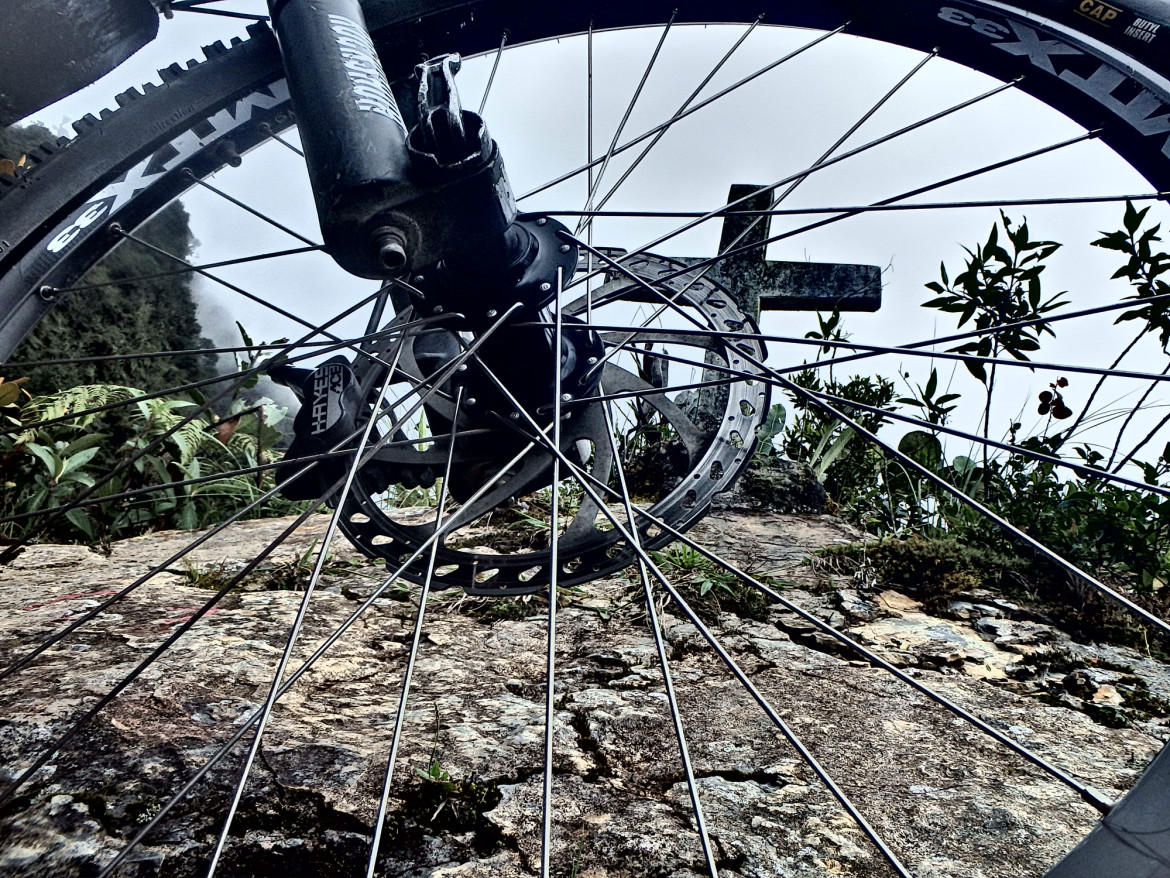
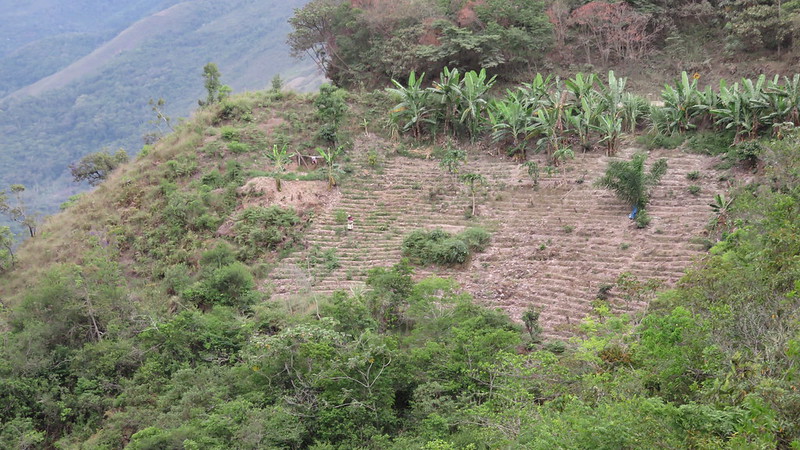
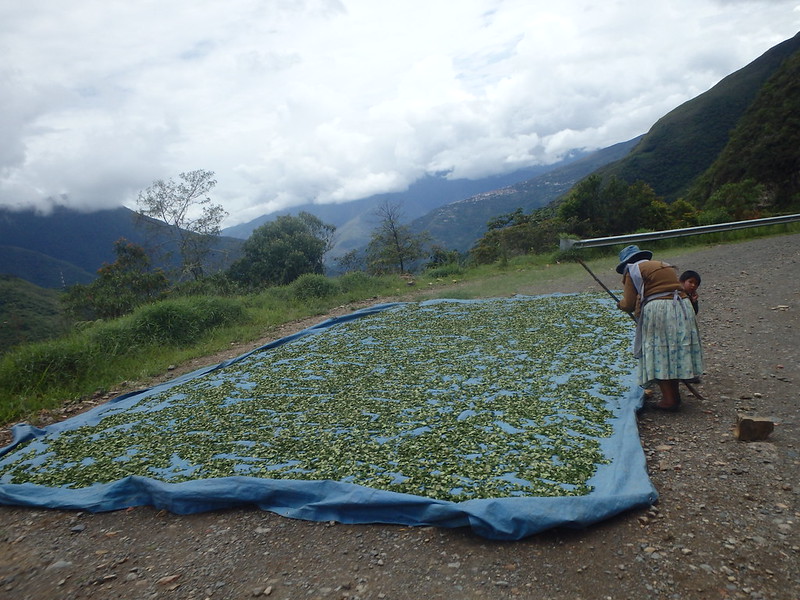
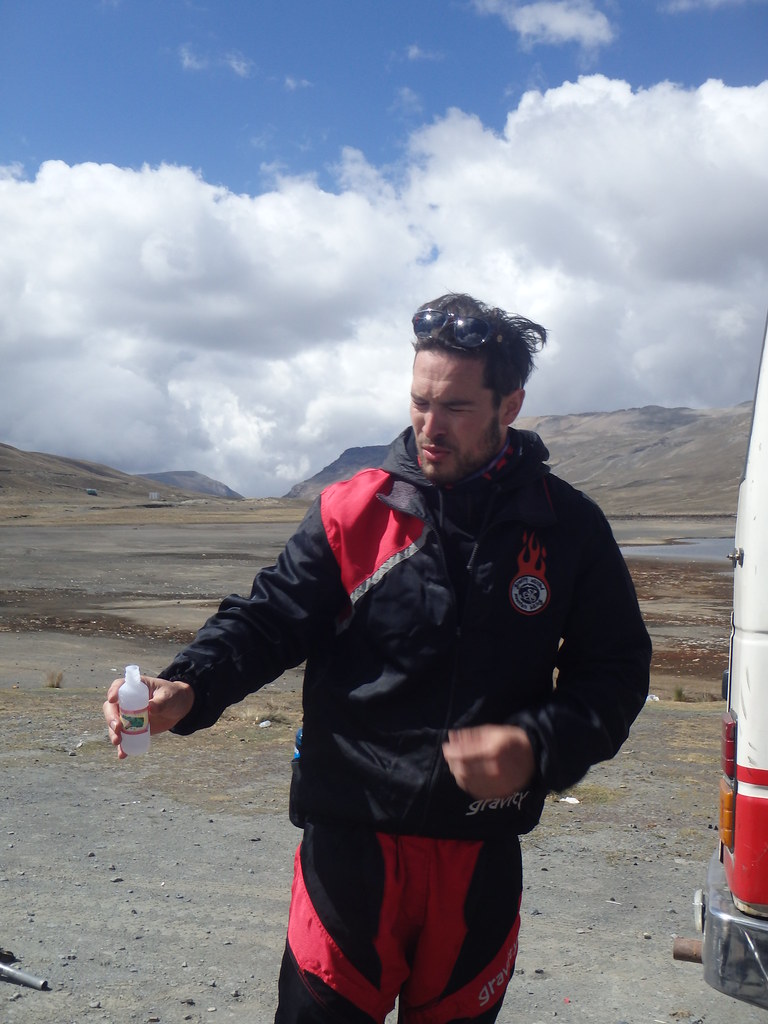
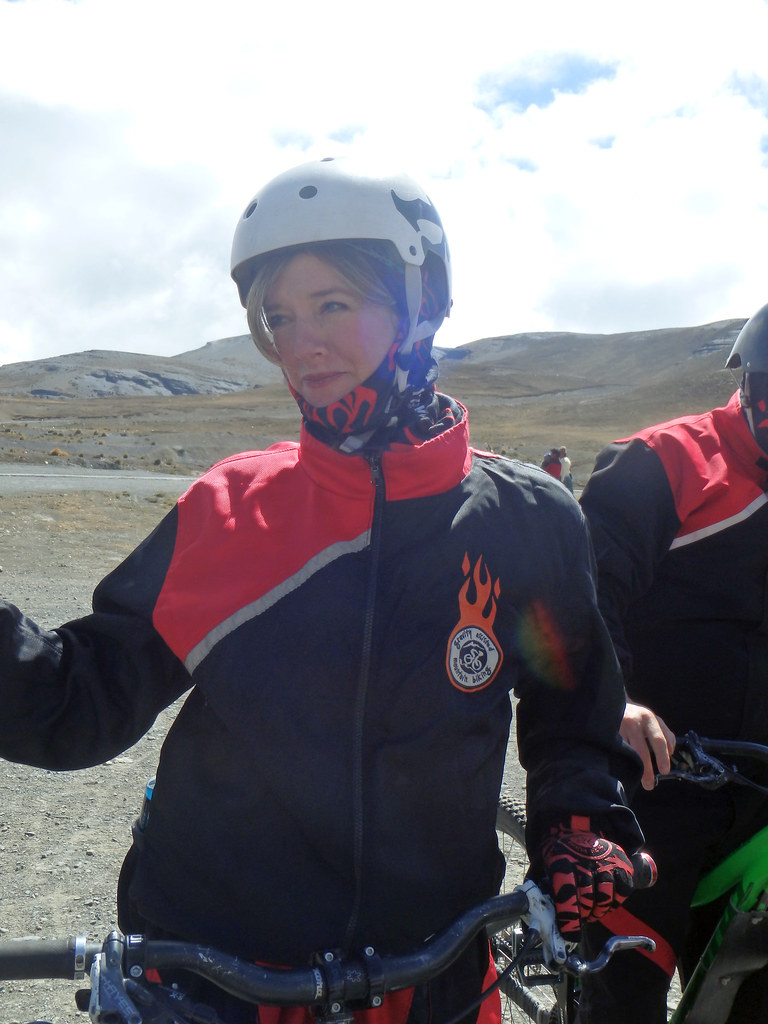
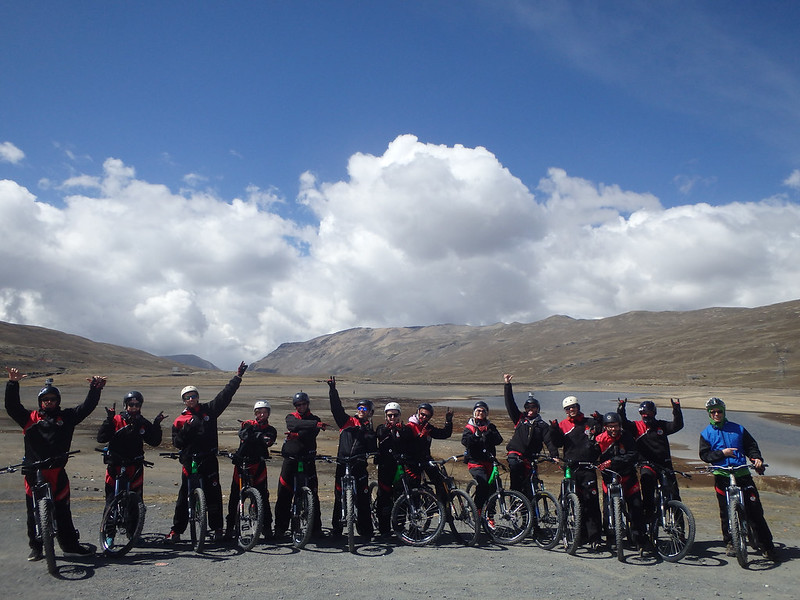
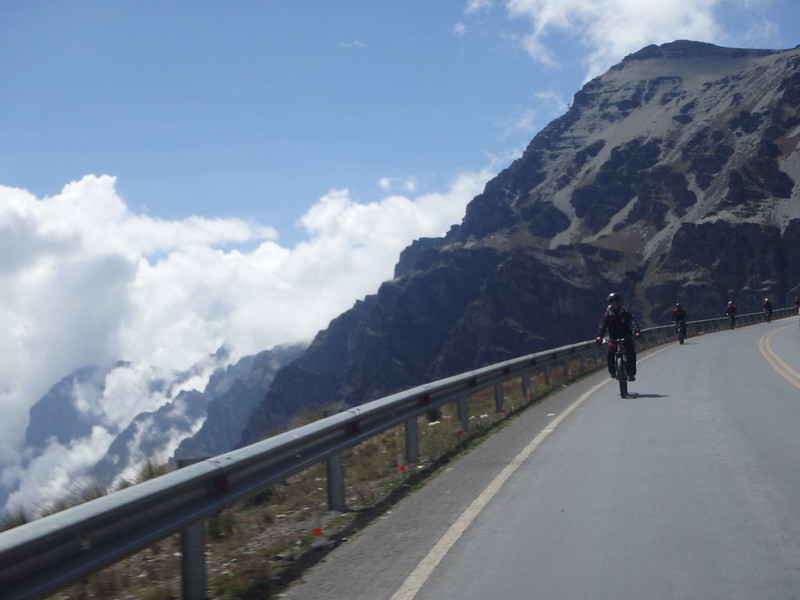
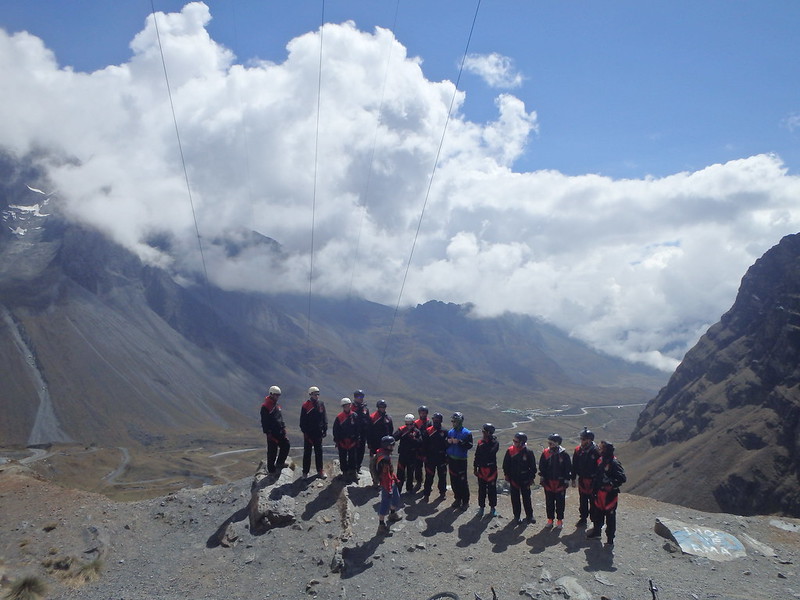
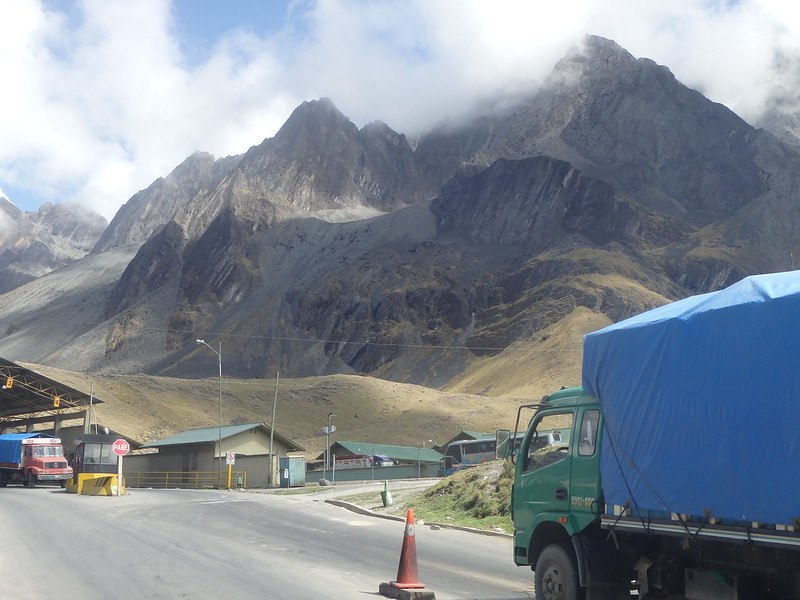


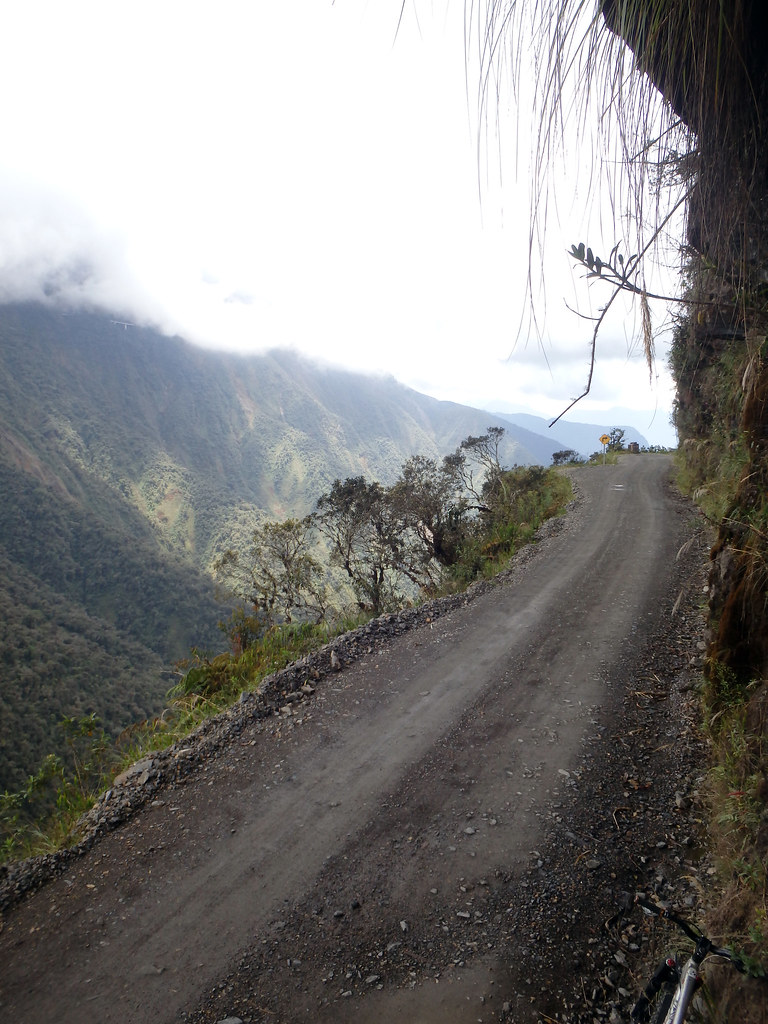
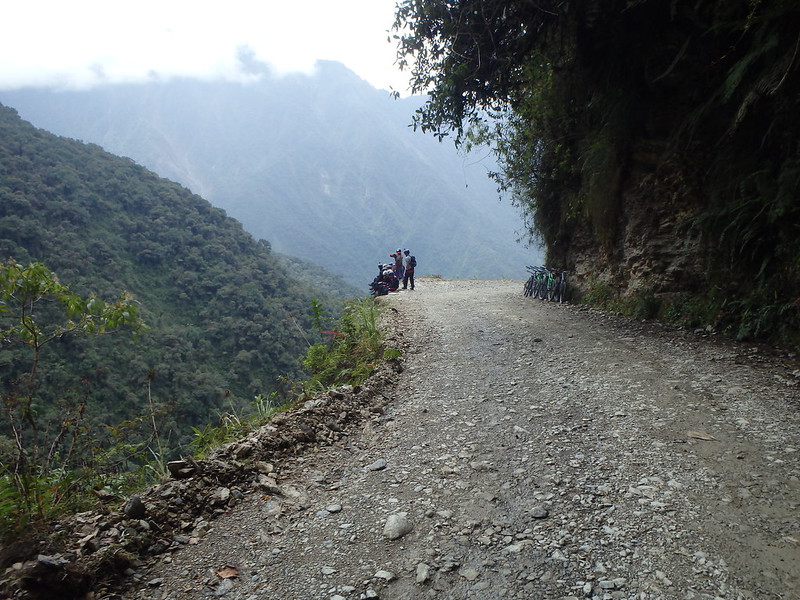
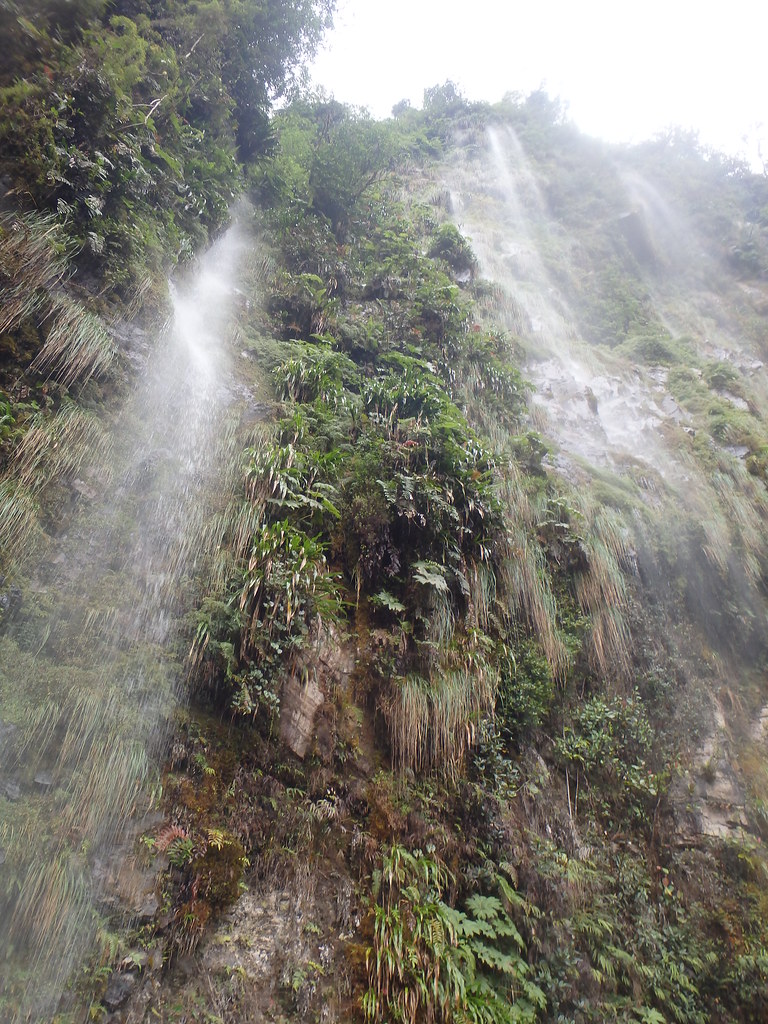
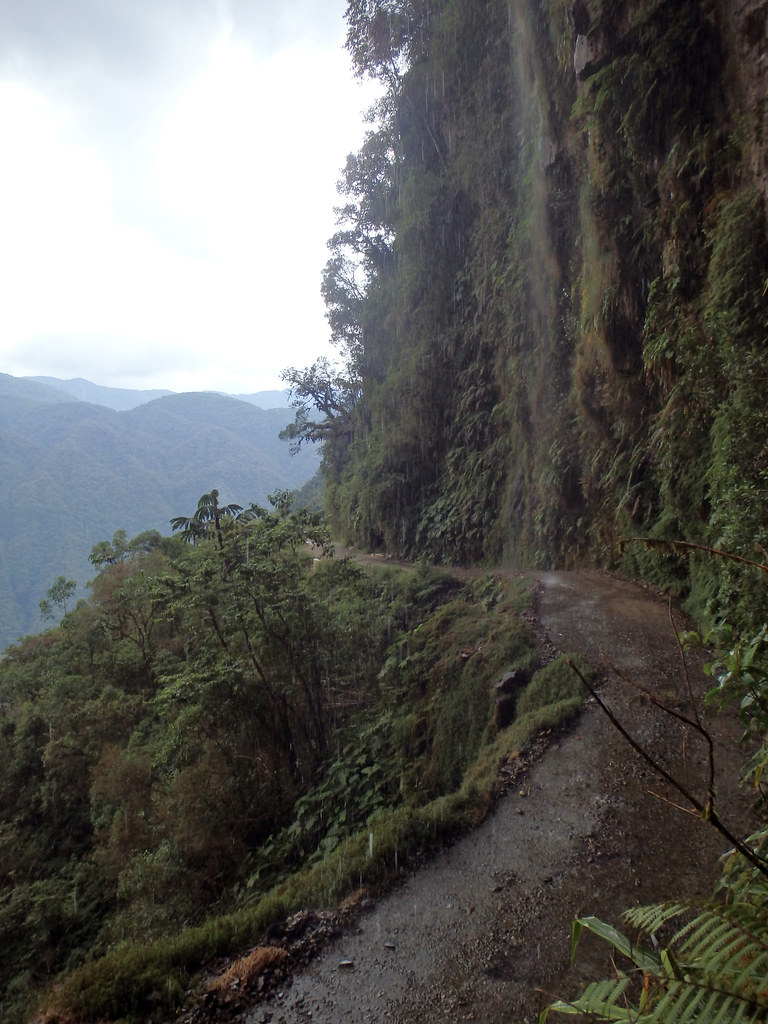
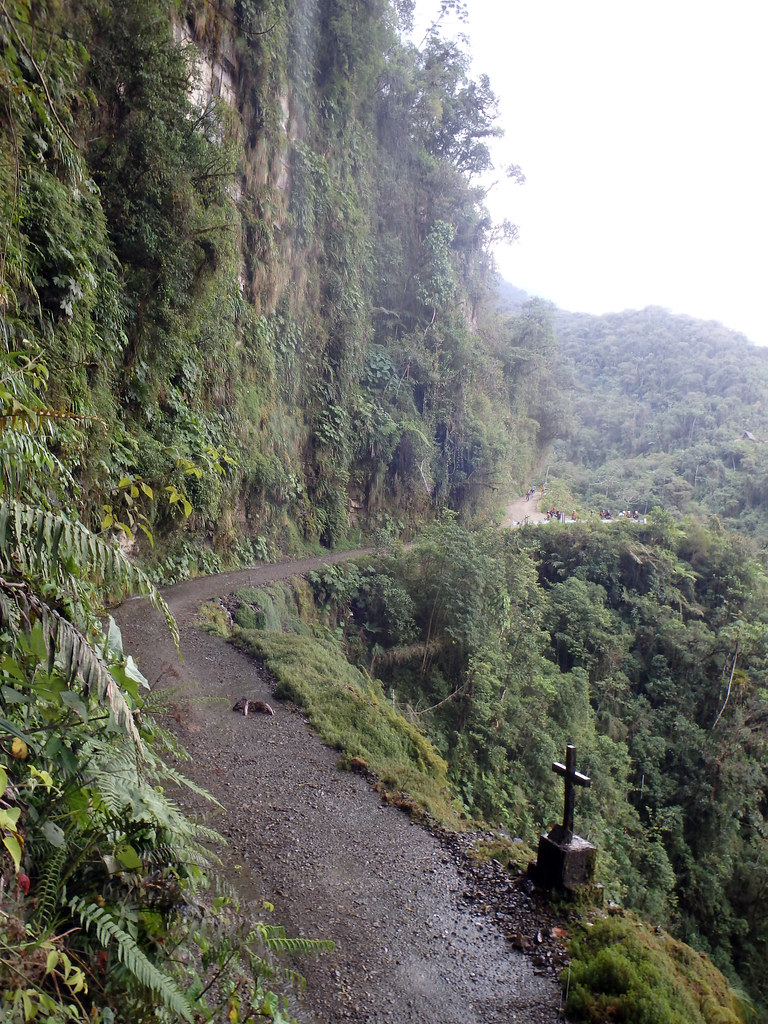
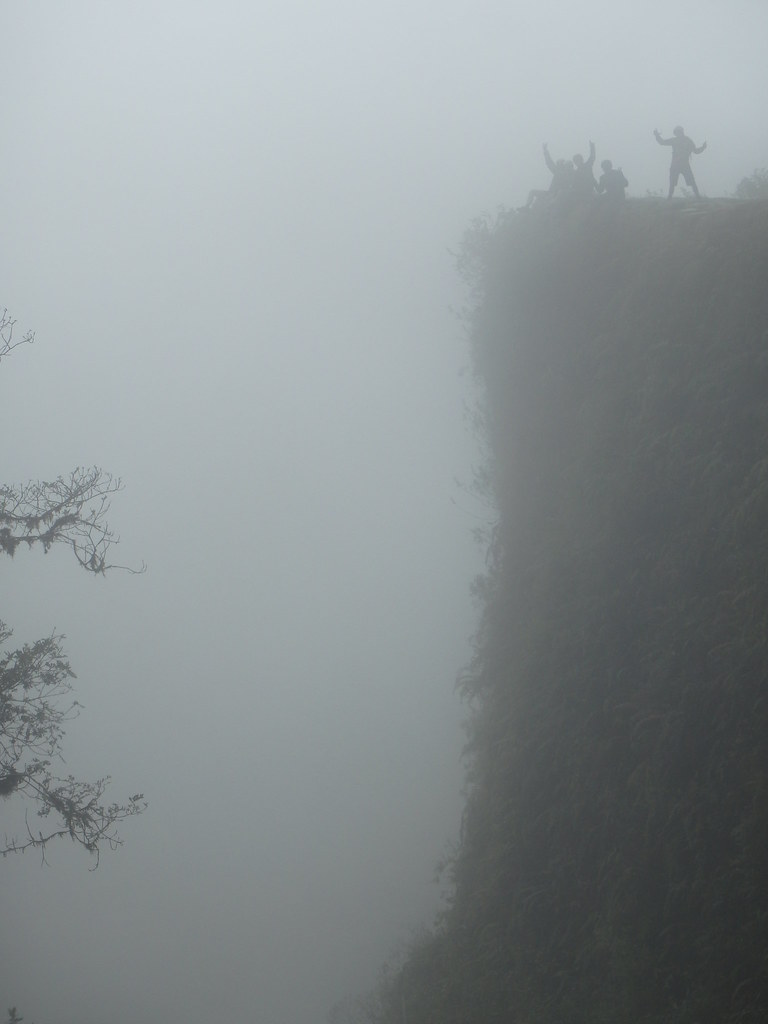
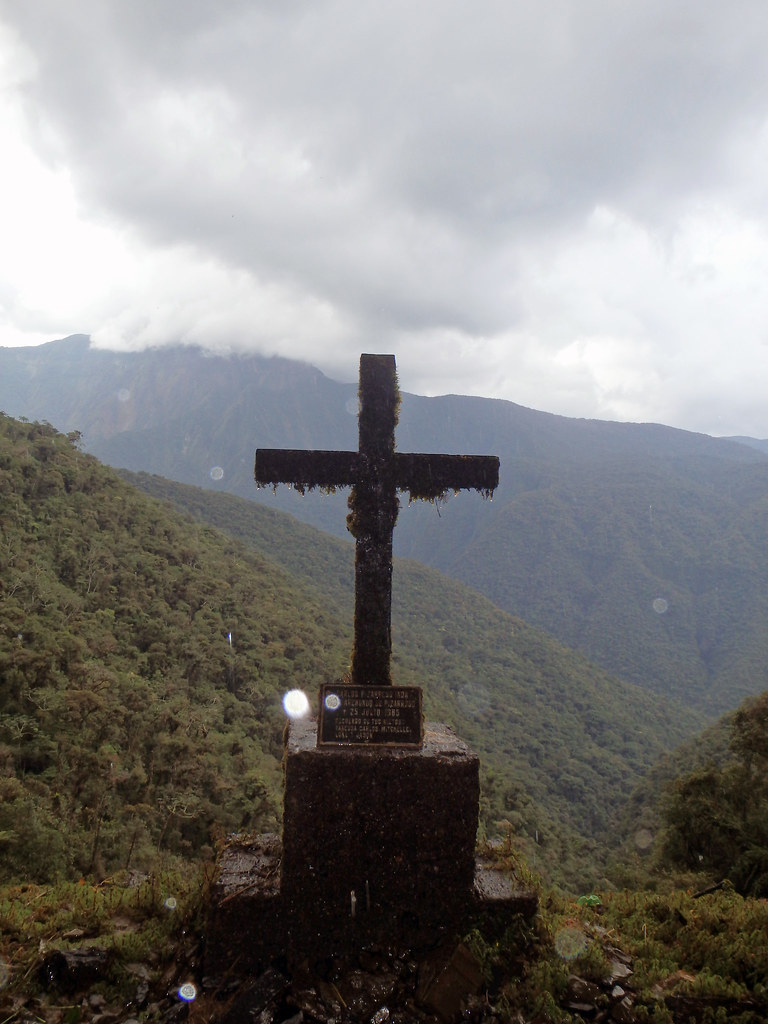

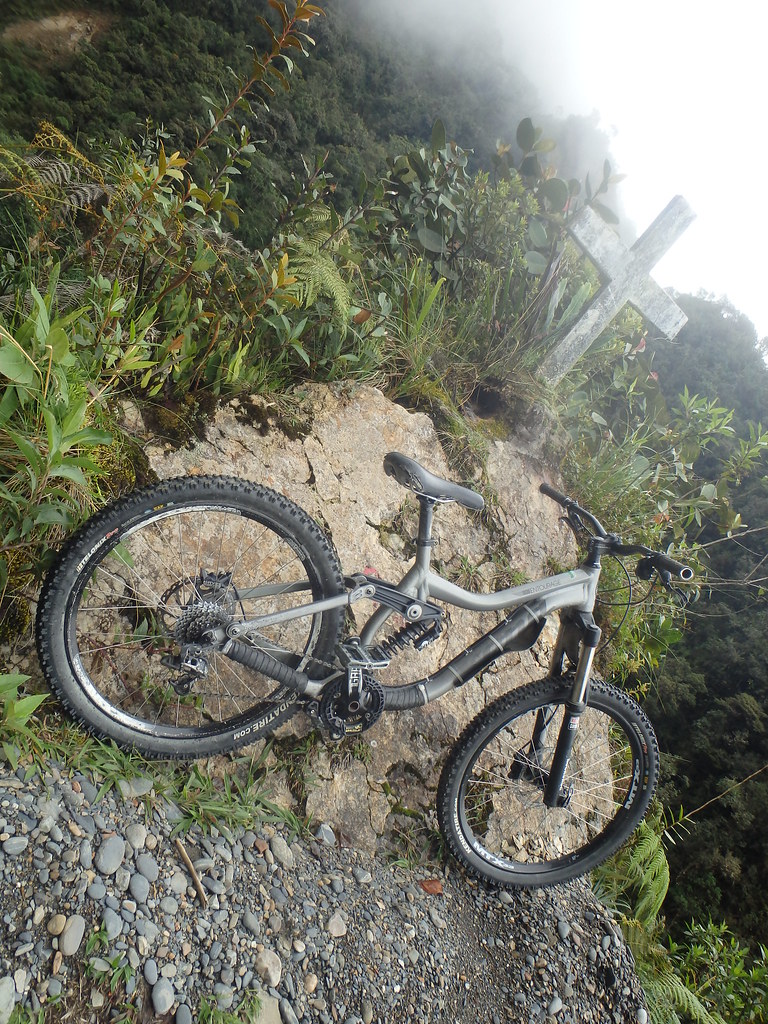
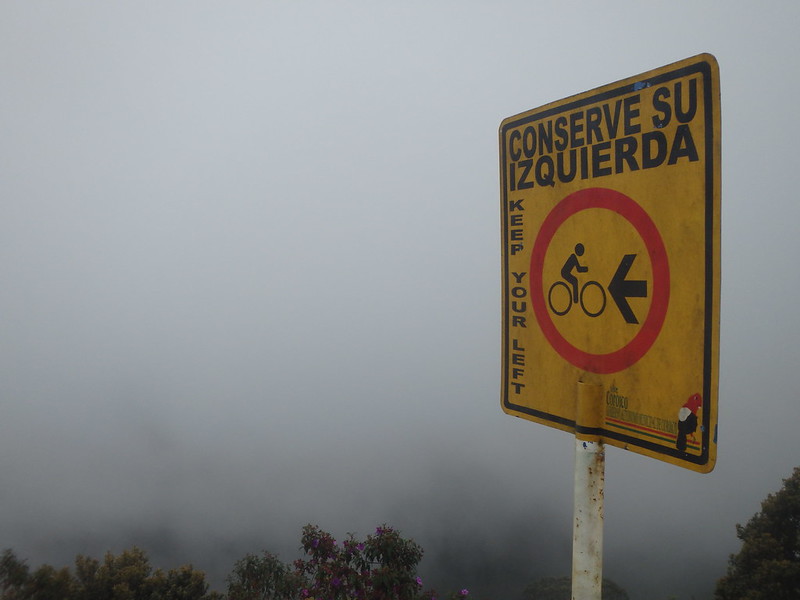
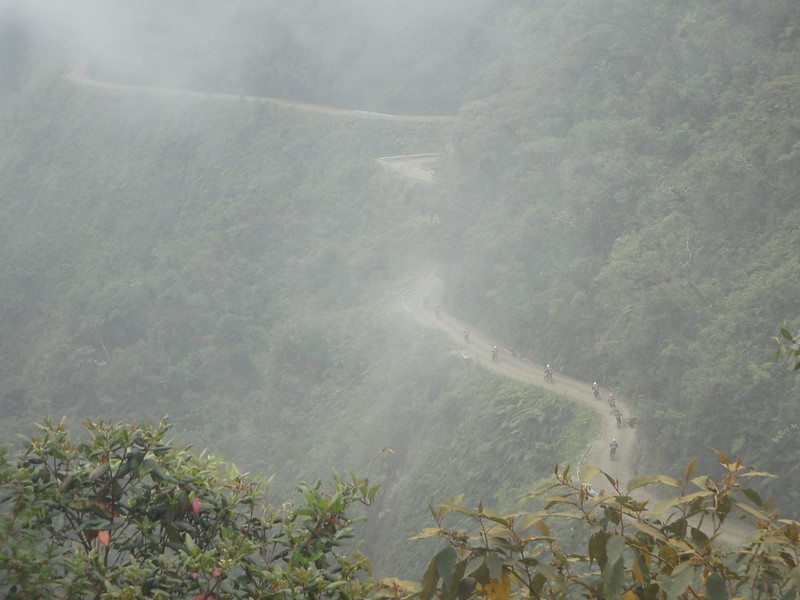
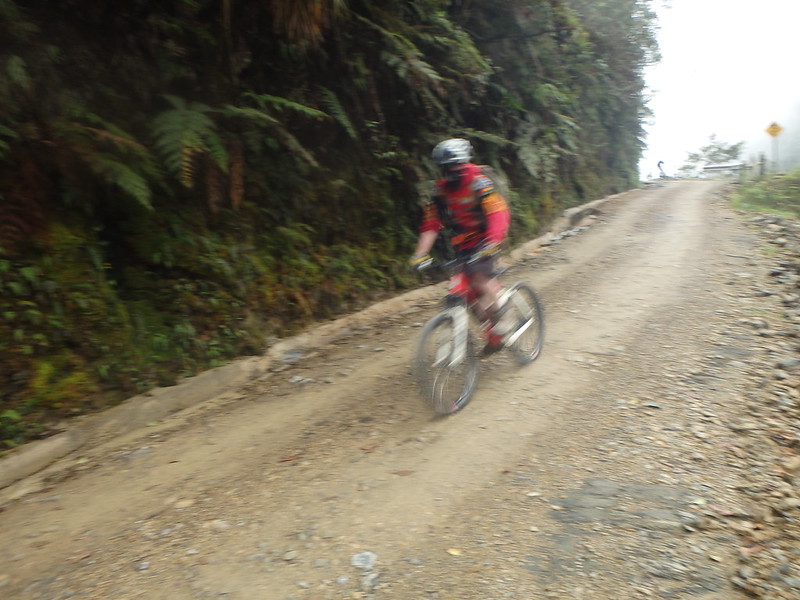
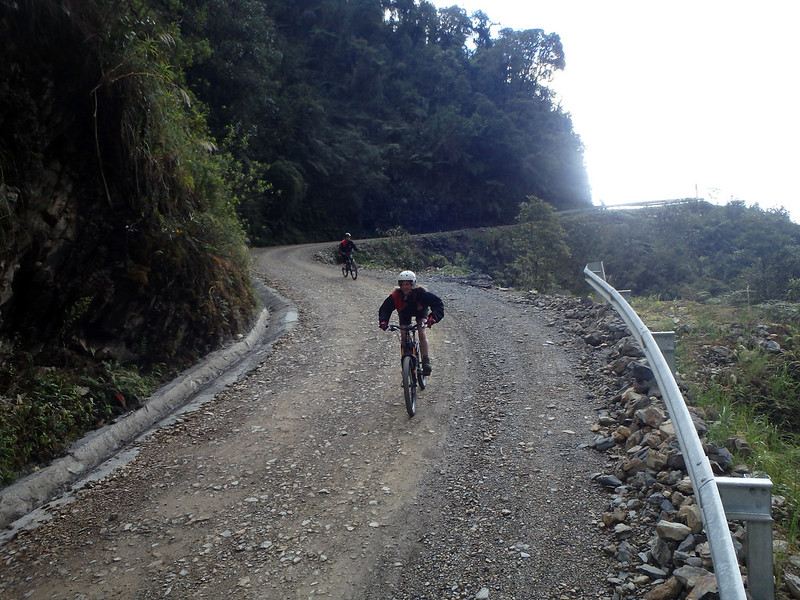
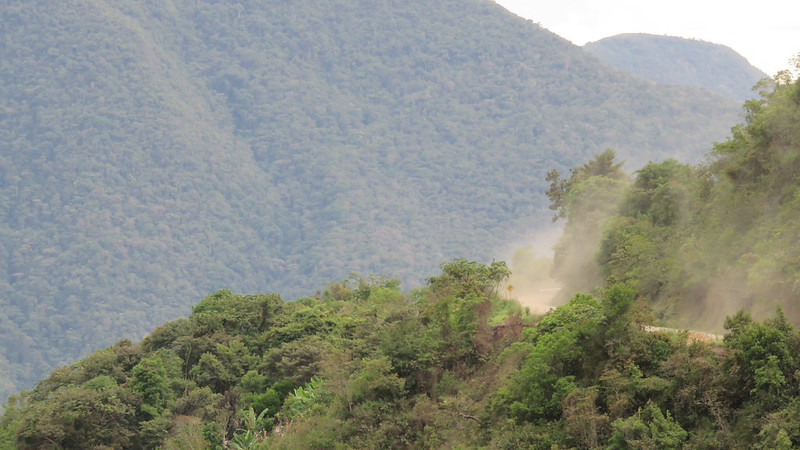

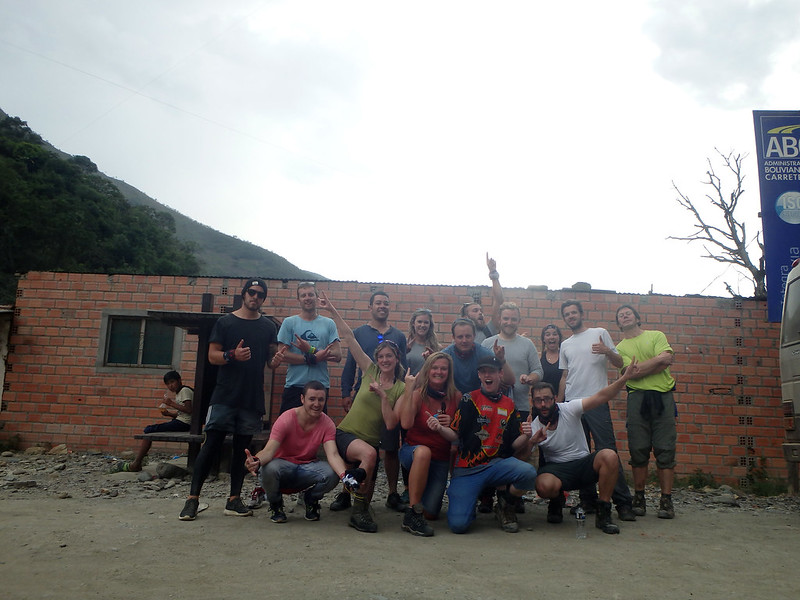
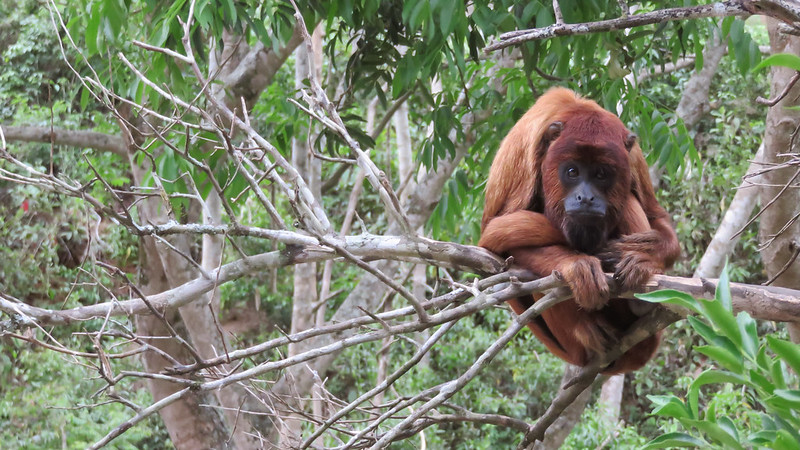
3 comments
Awesome adventure. Especially that you made it alive. So you could check out any time you wanted and you could actually get to leave…
I am the product of an American father and a Bolivian mother and have traveled to Bolivia a couple of times. Dad was stationed in the American embassy in La Paz and my mother, a local, worked there as a secretary. Dad had always told me stories about driving the death road when he was there. I saw this blog about bicycling it, which quite surprised him. He’s not able to read anymore due to macular degeneration so I read him your blog on your travels in Bolivia. I gotta say, even though that happened in 2014 we were both taken aback and sorry about your being a victim of theft there three times and we are happy you were able to bounce back. Anyway, we enjoyed reading about your journeys there.
Oh, interesting! Your dad actually drove that road? It was pretty scary just to cycle it because of having to ride down on the outside lane. The story about the “baby head” rocks really stuck in my head. Yes, it wasn’t the easiest trip being robbed so much but I learned. I haven’t been robbed since, knock on wood! I’m glad you and your dad enjoyed the story. 🙂